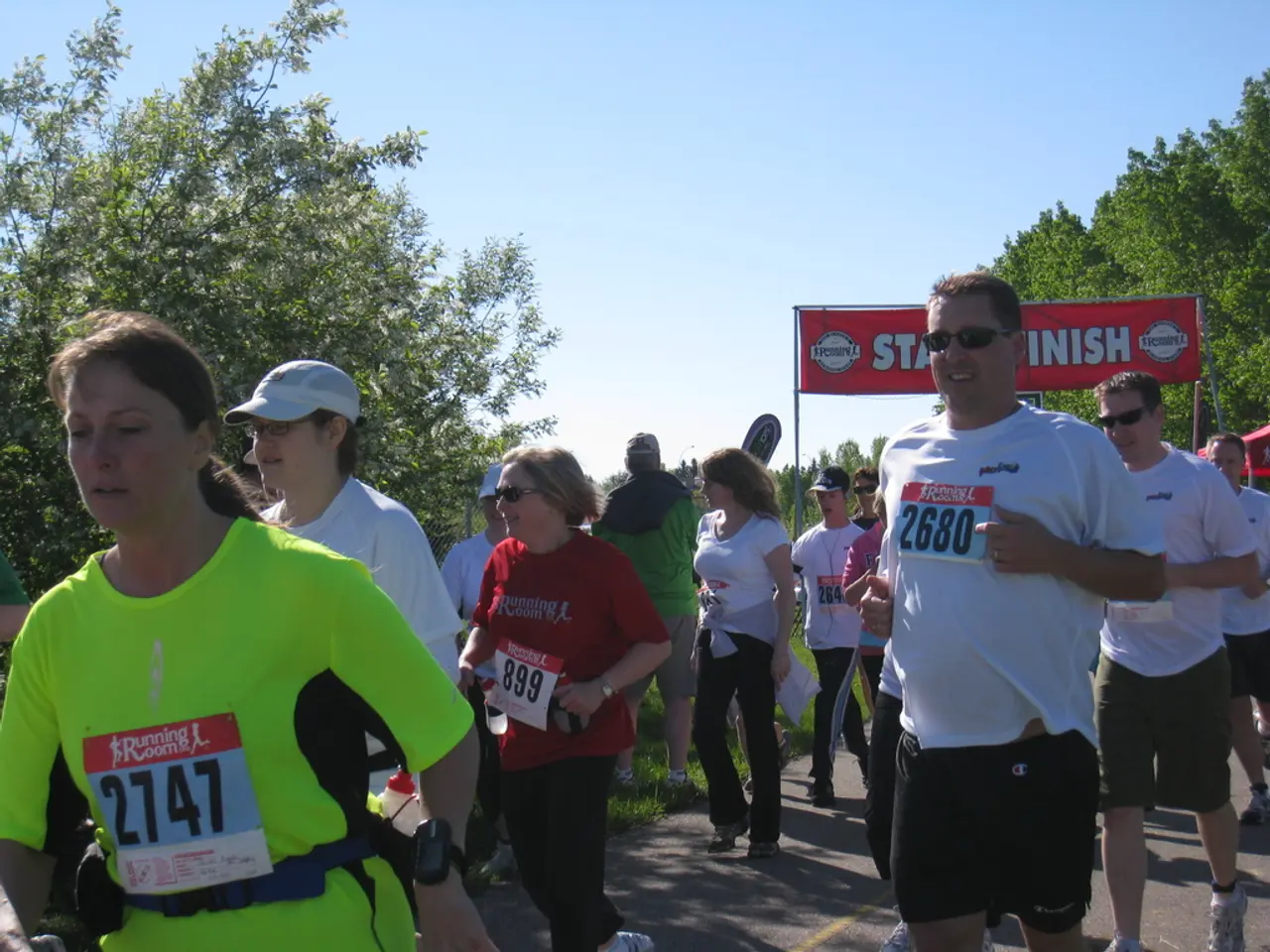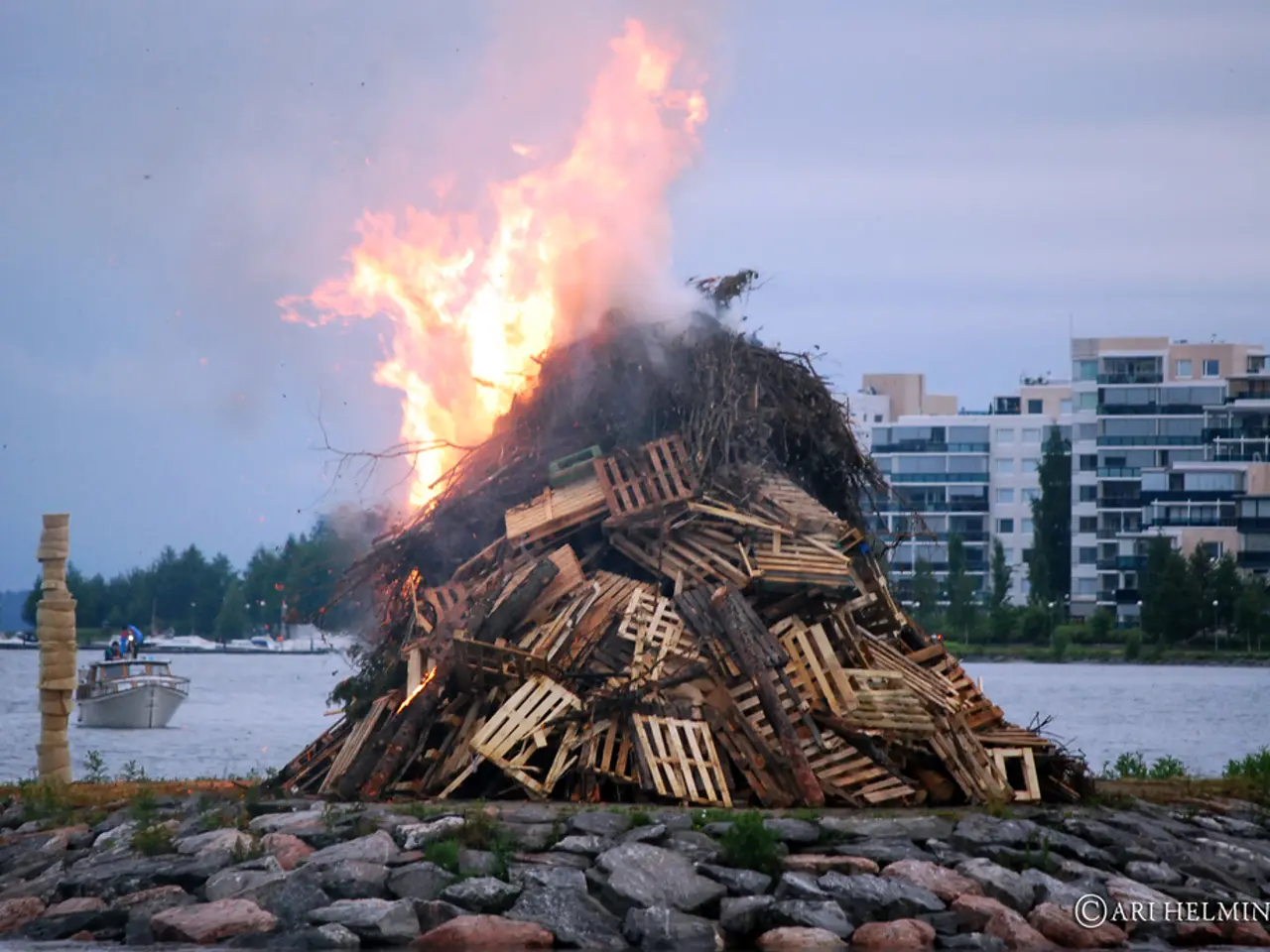Experienced a shocking disparity at Paris-Roubaix Femmes, finding it woefully overshadowed by the male counterpart's race
The women's race Paris-Roubaix Femmes reached its climax on Saturday afternoon, with top riders like Lotte Kopecky and Marianne Vos eagerly watching the action unfold. However, the event, which has rapidly become one of the races of the year, continues to face challenges in achieving parity with its male counterpart.
The disparity in coverage and attention between Paris-Roubaix Femmes and the men's Paris-Roubaix race is primarily due to historical, financial, and structural factors. The men's races, with their decades of tradition, attract bigger audiences and more lucrative broadcasting deals, creating a momentum that benefits funding, viewership, and media coverage.
Prize money differences reflect these economic realities. For instance, the Tour de France Femmes offers significantly less prize money than the men's Tour, partly because of shorter race length and lesser commercial revenues. Media coverage is often linked directly to sponsor investments and broadcasting rights income, which remain limited for women's races, leading to a lack of stable sponsorship and fragmented media attention, further reducing visibility for women's events.
Addressing this disparity requires a multifaceted approach. Gradual growth and professionalization of women’s races, including extending race length and geographic reach similar to men’s events, is crucial. Increasing investment in women’s cycling from sponsors, media, and cycling bodies to improve race prize funds, coverage quality, and marketing is also essential. Creating equal or more equivalent broadcasting opportunities and platforms for women’s races, promoting accessibility and audience growth, is another key factor.
Race organizers and cycling federations need to foster long-term commitment rather than short-term parity, recognizing that women's cycling has rapidly grown but is still maturing compared to men’s events. Highlighting and celebrating women cyclists’ stories and successes can help build fan engagement and media interest.
However, change is needed, and everyone should be watching the women's race. An example of this is the absence of the Arenberg Trench in the women's race, which is attributed to logistics, with the start in Denain deemed too close to the Arenberg. This iconic part of the race, known for its tunnel of trees and brutal cobbles, is a significant omission that underlines the disparity between the two races.
The press room, too, remains male-dominated, and it was a third emptier on Saturday compared to Sunday. Fewer fans are present on the course for the women's race compared to the men's race, and a promotional event for the men's race took attention away from the Paris-Roubaix Femmes race.
At the Tour of Flanders, both events happen on the same day, making it difficult to cover or watch both. The women's Paris-Roubaix race occurs on the same day as the Paris-Roubaix Challenge, an official sportive that is heavily organized. A potential issue with the women's race occurring on the same day as the Paris-Roubaix Challenge is that it could cause delays due to medical emergencies or similar situations.
Subscribing to The Leadout, a newsletter series from our website and Cyclingnews, will provide weekly opinions on goings-on at the upper echelons of cycling, helping you stay informed about the progress and challenges faced by women's races like Paris-Roubaix Femmes as they strive for parity with their men's equivalents.
In a historic moment, Pauline Ferrand-Prévot launched a victorious move in Paris-Roubaix Femmes, writing her name into the history books. Emma Norsgaard made a potential race-winning attack from the group of favorites during Paris-Roubaix Femmes, showing the competitiveness and depth in the women’s peloton. There is still a long way to go in achieving gender parity in professional cycling, and moments like the team presentation can reinforce the perception that the femmes are treated as secondary to the hommes.
Change is on the horizon, and with continued efforts towards professionalization, investment, and media coverage, Paris-Roubaix Femmes and other women's races will undoubtedly continue to rise in prominence and prestige, eventually reaching the status they deserve alongside their male counterparts.
- The disparity in coverage and attention between women's races like Paris-Roubaix Femmes and their male counterparts can be attributed to factors such as historical tradition, financial aspects, and structural issues, which affect prize money, media coverage, sponsorship, and audience growth.
- The omission of iconic elements in women's races, such as the absence of the Arenberg Trench in the Paris-Roubaix Femmes race, underlines the disparity between the two races and highlights the need for equal treatment and opportunities for both men's and women's events.





